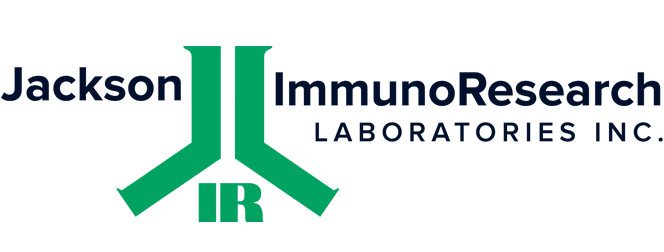Tissue Typing

What is the HLA system?
The HLA system is the human version of the major histocompatibility complex (MHC), a large group of genes found on vertebrate DNA that encodes cell surface proteins with essential roles in regulating the immune response. It maps to the short arm of chromosome 6 (6p21) and is organized into three regions, class I, II, and III. Of these, class I and II serve to present processed peptide antigens to T cells, while class III encodes various immune regulatory molecules, many of which are important in inflammation. These include complement components C2, C4, and factor B, as well as various heat shock proteins and tumor necrosis factors1,2.
Critically, the immune system uses HLAs to distinguish between ‘self’ and ‘non-self’. Any cells that display an individual’s unique HLA type are recognized by the immune system as harmless, whereas those with a different HLA pattern to the host are seen as foreign invaders. In addition to being polygenic, the HLA system is highly polymorphic, and is currently known to comprise over 36,000 different alleles3. This makes it clinically important in the transplantation of foreign tissues and organs, where tissue typing represents a critical step in determining whether a transplant should go ahead.
How is the HLA system used for tissue typing?
Tissue typing has historically relied on serological methods. These involve mixing well-characterized anti-HLA antibodies (each with specificity for a single HLA) with lymphocytes from the individual being tissue typed. T cells are used for defining class I HLA molecules and B cells for defining class II HLA. When complement is added to the reaction, any cells with bound antibodies are lyzed, signifying the presence of that HLA on the cell surface4.
A main advantage of serological tissue typing is that it is relatively quick and inexpensive to perform. However, serological tissue typing is unable to distinguish between different HLA sub-classes and does not permit full HLA characterization. Consequently, tissue typing methods based on genetic sequencing are seeing increased use. For example, next-generation sequencing (NGS) provides improved HLA genotype accuracy, although challenges remain for computation and data processing 5.

How is DSA testing performed?
The original method for DSA testing, known as the complement-dependent cytotoxicity crossmatch (CDC-XM) assay, follows similar principles to serological tissue typing. However, instead of commercial anti-HLA antibodies, it uses the recipient’s serum. When the serum is mixed with the potential donor cells, the presence of any anti-HLA DSA in the serum causes cell lysis when complement is added to the reaction6.
Although CDC-XM is still used, its limited sensitivity has led to the development of alternative methods. One such approach is the flow cytometric crossmatch (FCXM) assay, during which the recipient’s serum and enriched donor lymphocytes are mixed together before any bound antibodies are detected with a fluorescently-labeled F(ab’)2 specific to human IgG7. Critically, using a F(ab’)2 eliminates the risk of antibody binding to bind to Fc receptors at the cell surface, which could generate false positive results. Jackson ImmunoResearch’s Fluorescein (FITC) AffiniPure F(ab’)₂ Fragment Goat Anti-Human IgG, Fcγ fragment specific antibody (109-096-098) is widely used for FCXM, including for experiments that combine DSA detection with the identification of T and B cells using labeled anti-CD3 and anti-CD19 antibodies, respectively.
To reduce assay times and simplify set-up, two modified versions of the FCXM were reported in 20178. The first of these, termed the Halifax protocol, includes a 96-well tray platform, shortened wash times and incubations, and an increased serum to cell suspension volume ratio. The second, known as the Halifaster protocol, is proven to improve lymphocyte purity compared to density gradient centrifugation and to reduce the cell isolation time by approximately 40%. These methods are seeing increased uptake, along with various assays based on Luminex® technology, which have utility for both DSA testing and tissue typing.
Anti-Human IgG F(ab’)2 antibodies from Jackson ImmunoResearch
Jackson ImmunoResearch specializes in producing secondary antibodies for life science applications and offers Anti-Human IgG F(ab’)2 antibodies in two cross adsorptions. 109-096-098 is cross-adsorbed against Bovine, Horse and Mouse serum proteins, making it suitable for most FCXM protocols. 109-096-170 is cross-adsorbed against Bovine, Mouse, and Rabbit serum proteins, and is indicated for DSA testing in patients undergoing thymoglobulin immunosuppression (to prevent transplant rejection), for whom it is essential to prevent unwanted reactivity to circulating rabbit Immunoglobulin.
References
- Cruz-Tapias P, Castiblanco J, Anaya JM. Major histocompatibility complex: Antigen processing and presentation. In: Anaya JM, Shoenfeld Y, Rojas-Villarraga A, et al., editors. Autoimmunity: From Bench to Bedside [Internet]. Bogota (Colombia): El Rosario University Press; 2013 Jul 18. Chapter 10. Available from: https://www.ncbi.nlm.nih.gov/books/NBK459467/
- Choo S. Y. (2007). The HLA system: genetics, immunology, clinical testing, and clinical implications. Yonsei medical journal, 48(1), 11–23. https://doi.org/10.3349/ymj.2007.48.1.11/
- https://www.ebi.ac.uk/ipd/imgt/hla/about/statistics/
- Mulley, W. R., Hudson, F., Lee, D., & Holdsworth, R. F. (2019). Tissue typing for kidney transplantation for the general nephrologist. Nephrology (Carlton, Vic.), 24(10), 997–1000. https://doi.org/10.1111/nep.13637/
- Osoegawa, K., Montero-Martín, G., Mallempati, K. C., Bauer, M., Milius, R. P., Maiers, M., Fernández-Viña, M. A., & Mack, S. J. (2021). Challenges for the standardized reporting of NGS HLA genotyping: Surveying gaps between clinical and research laboratories. Human immunology, 82(11), 820–828. https://doi.org/10.1016/j.humimm.2021.08.011/
- Tait B. D. (2016). Detection of HLA Antibodies in Organ Transplant Recipients – Triumphs and Challenges of the Solid Phase Bead Assay. Frontiers in immunology, 7, 570. https://doi.org/10.3389/fimmu.2016.00570/
- Mahowald G. K. (2021). The CDC crossmatch in the era of flow cytometric cross-match and single antigen beads. Jornal brasileiro de nefrologia, 43(3), 299–300. https://doi.org/10.1590/2175-8239-JBN-2021-0110/
- Liwski, R. S., Greenshields, A. L., Conrad, D. M., Murphey, C., Bray, R. A., Neumann, J., & Gebel, H. M. (2018). Rapid optimized flow cytometric crossmatch (FCXM) assays: The Halifax and Halifaster protocols. Human immunology, 79(1), 28–38. https://doi.org/10.1016/j.humimm.2017.10.020/
